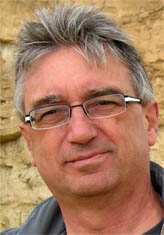AUTHORS
More information on SCIENTIFIC BOARD
TERMS OF PUBLICATION AND COPYRIGHT TRANSFER
EDITORIAL PROCESS
Manuscripts should be typed, double-spaced with wide margins, on one side of the page only. Notes and footnotes should be avoided. Preference will be given to papers less than 6000 words in length. Pages should be numbered. The submission of the final version of the manuscript should be made through e-mail or on a disk. Microsoft Word files are preferred.
Authors should include a cover letter summarizing the length (number of text pages, total number of text words, number of reference pages, number of figure captions, number of tables) of the submission and including a list of four possible referees with full postal and e-mail addresses listed.
The title of the manuscript, name(s) and institutional (mailing and e-mail) address(es) of the author(s) should appear on the first page of the manuscript. A running title is also required.
On the second page, a short abstract should be submitted with the paper (preferably, no longer than 250 words), together with a maximum of 8 keywords suitable for indexing.
Spelling should conform to the Oxford English Dictionary.
References in the text should be by name and date. References should be listed alphabetically at the end of the paper, as follows:
- Books, monographs and doctoral theses: Haynes, G. (1991). Mammoths, mastodonts and elephants. Biology, behavior and the fossil record. Cambridge University Press, Cambridge.
- Articles: Lupo, K. D. (1994). Butchery marks and carcass acquisition strategies: distinguishing hunting from scavenging in archaeological contexts. Journal of Archaeological Science, 21: 827-837.
- Book chapters: Behrensmeyer, A. K. (1990). Transport-hydrodynamics: bones. In (Briggs, D. E. G. & Crowther, P.R., eds.) Paleobiology: a synthesis. Oxford: Blackwell Scientific Publications, pp.232-235.
Illustrations, whether photographs or drawings, should be numbered as «figures» in their order of mention. Only high-quality photocopies of artwork should be submitted initially if using a hard copy of the manuscript . Original line drawings and photographs will be required for printing. An electronic format is preferred. Illustrations in colour can be accepted for publication if the authors defray the cost of publishing additional colour materials in print. Plates should not exceed 25 x 15 cm.
Hard copies of the figures are required. Only .tif and .jpeg files in RGB colour mode will be accepted.
Proofs will be sent directly to the authors by the publisher, and should be returned immediately after correction.
Authors submitting a manuscript do so on the understanding that if it is accepted for publication, copyright in the article, including the right to reproduce the article in all forms and media, shall be assigned exclusively to the publisher. In consideration for the assignment of copyright, the Publisher will supply a PDF file of each paper. Further offprints may be ordered at extra cost at the proof stage.
The Taphonomist´s Corner is a section included on the last page of each printed issue, and consists of a relevant taphonomic image together with a brief explanation (no more than 400 words) and a short title. Contributors are encouraged to submit materials for this section. Among the materials received, the editors will select one contribution for each issue, and the photograph will also be printed on the cover.
Journal of Taphonomy strongly encourages authors to submit an electronic version of their accepted work, as this will speed significantly the processing of the manuscript. Electronic submissions will be processed in three months. Please bear in mind that this electronic version must exactly match the final hard copy that was accepted. Manuscript files can be transmitted via e-mail if the total file size of all attached files does not exceed 2 megabytes. Address the e-mail to any of the editors. Either editor can be chosen when sending electronic versions of the manuscript. If sending manuscripts through regular mail, authors should include four copies of all materials, and those based in the U.S.A. Should send their manuscripts to Pickering. Authors based in other countries should send their manuscripts to Dominguez-Rodrigo or Alcalá.
Editors addresses are listed below
Manuel Domínguez-Rodrigo
Departamento de Prehistoria, Facultad de Geografía e Historia, Universidad Complutense de Madrid. C/ Profesor Aranguren s/n, 28040 Madrid, Spain

Travis R. Pickering
Department of Anthropology, University of Wisconsin-Madison, 1180 Observatory Drive, 5240 Social Science Building Madison, Wisconsin 53706, U.S.A.

Luis Alcalá
Fundación Conjunto Paleontológico de Teruel
Avenida de Sagunto s/n (Edificio Dinópolis), 44002 Teruel, Spain


